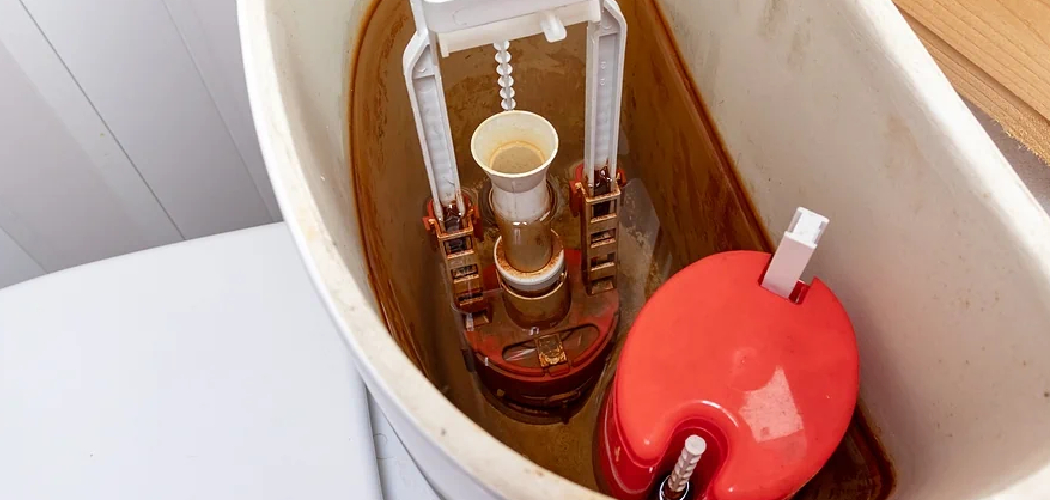Iron bacteria can be a troublesome issue for homeowners, particularly when they begin to affect the toilet tank. These bacteria thrive in water with high iron content, leading to a brownish slime that can clog pipes and cause unpleasant odours. Understanding how to identify and eliminate iron bacteria is essential for maintaining a clean and functioning toilet system. In this guide, we will explore effective methods for how to get rid of iron bacteria in toilet tank, ensuring a fresh and hygienic bathroom environment.
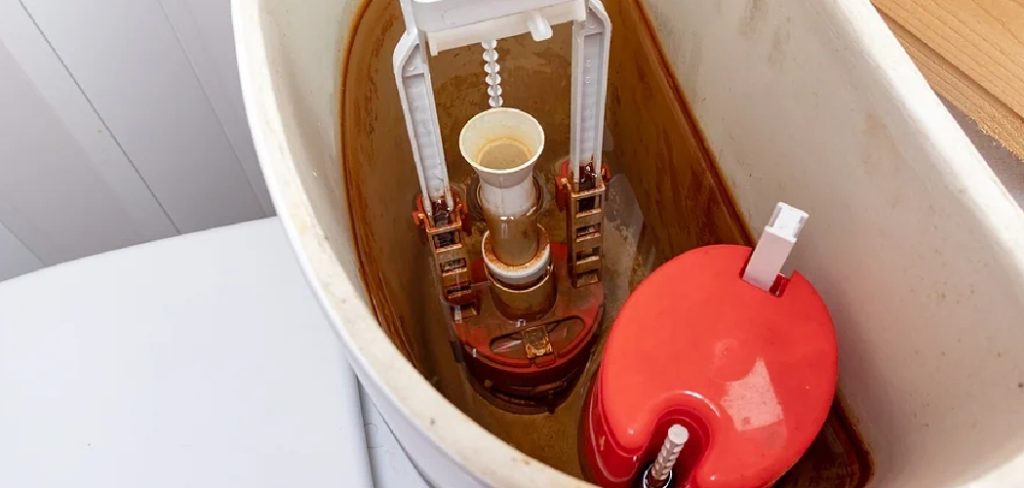
The Importance of Removing Iron Bacteria from Toilet Tanks
Removing iron bacteria from toilet tanks is crucial for several reasons. Firstly, these bacteria can lead to significant plumbing issues by forming clogs that can impede water flow, potentially resulting in costly repairs. Secondly, the presence of iron bacteria often results in unpleasant odours and unsightly stains, detracting from the cleanliness and aesthetics of your bathroom. Additionally, iron bacteria can contribute to the corrosion of toilet components, shortening their lifespan and increasing maintenance needs. Regularly addressing this issue not only promotes a healthier bathroom environment but also enhances the longevity and efficiency of your plumbing system.
What Causes Iron Bacteria in a Toilet Tank?
Iron bacteria develop in toilet tanks primarily due to the presence of iron-rich water sources. When water containing dissolved iron enters the tank, it creates an ideal environment for these bacteria to thrive. These microorganisms feed on the iron and other organic materials present, leading to the formation of slimy, brownish deposits. Factors such as stagnant water, lack of sufficient sanitation practices, and the presence of sedimentation can exacerbate the growth of iron bacteria. Additionally, toilets that are not frequently used or regularly cleaned may become hotspots for these bacteria, further complicating the problem. Understanding these causes is essential for effective management and prevention of iron bacteria in your toilet tank.
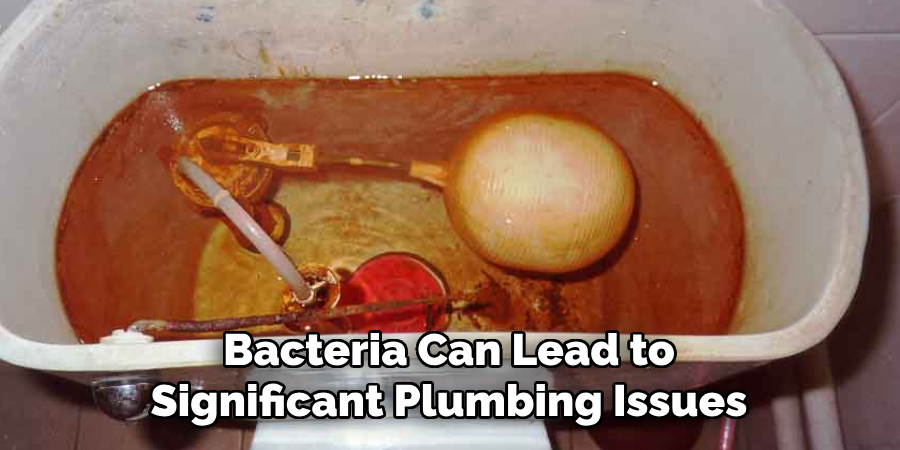
10 Methods How to Get Rid of Iron Bacteria in Toilet Tank
1. Use Household Bleach for Immediate Results
Household bleach is one of the most effective and accessible solutions to eliminate iron bacteria from your toilet tank. Bleach kills bacteria and removes stains caused by the iron deposits. To start, pour about a cup of bleach into the toilet tank, ensuring the water level is sufficient to mix well with the bleach. Let the solution sit for about 15-20 minutes, allowing it to kill the bacteria. Afterward, flush the toilet a few times to rinse out the bleach solution. Bleach is a quick fix, but keep in mind that iron bacteria can return if not addressed with a long-term treatment plan.
2. Install a Whole-House Water Filtration System
Installing a whole-house water filtration system is an excellent long-term solution to prevent iron bacteria from entering your toilet tank in the first place. These systems are designed to filter out impurities, including iron and other minerals, from your water supply before it reaches your plumbing. Water softeners or iron filtration systems are commonly used for this purpose. By reducing the amount of iron in the water, you’ll make your toilet tank less hospitable for iron bacteria, thus preventing future growth and accumulation.
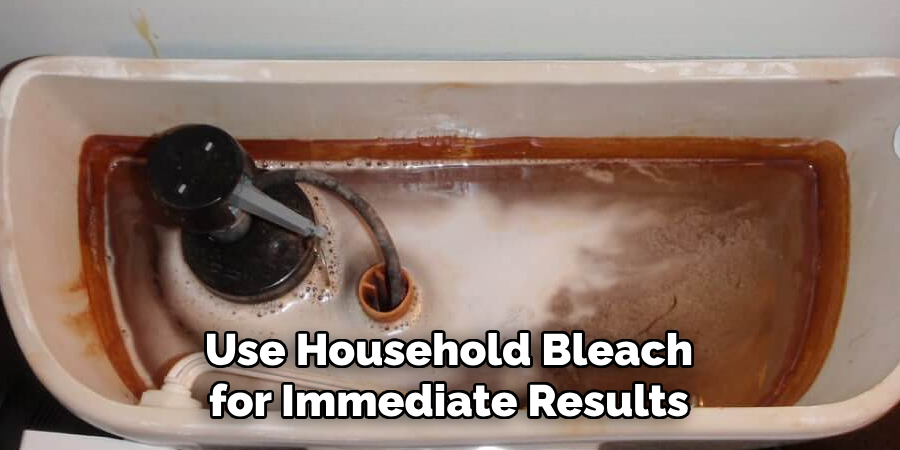
3. Shock Chlorination of the Well System
If your home relies on well water, iron bacteria may be proliferating in the well itself. Shock chlorination is an effective method for killing bacteria in the well system. This process involves adding a large concentration of chlorine bleach to the well and allowing it to circulate through the plumbing, including the toilet tank. To shock chlorinate your well, consult a professional or follow manufacturer guidelines. Afterward, thoroughly flush the system to remove the chlorine. This treatment will not only target the iron bacteria in the toilet tank but will also eliminate them from the water source.
4. Use Hydrogen Peroxide for a Gentler Clean
Hydrogen peroxide is another effective solution for killing iron bacteria, and it’s a more environmentally friendly alternative to bleach. To use this method, add 1-2 cups of hydrogen peroxide to the toilet tank, ensuring the water mixes with the solution. Let it sit for about 30 minutes, allowing the hydrogen peroxide to work on breaking down the bacteria and removing iron stains. After the waiting period, flush the toilet a few times to rinse the tank. This method is less corrosive than bleach and is an excellent choice for households concerned about using harsh chemicals.
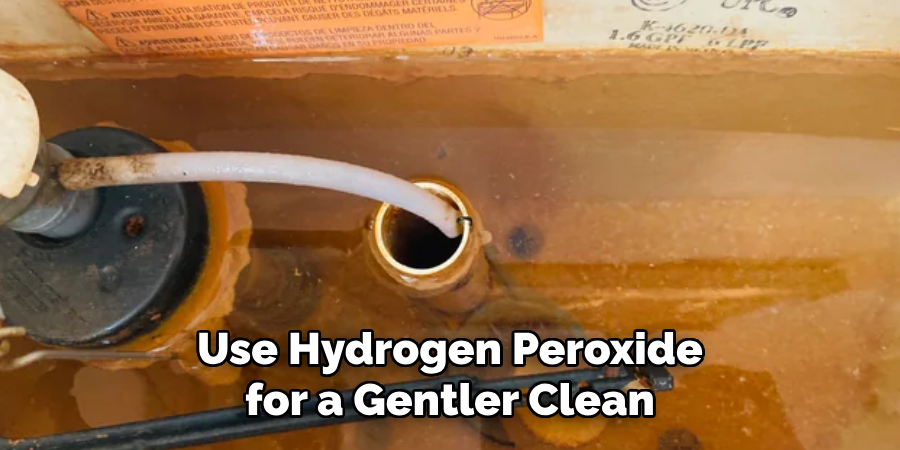
5. Add Vinegar to Dissolve Iron Deposits
Vinegar is a natural cleaning agent that can help dissolve iron deposits and prevent the buildup of iron bacteria in your toilet tank. White distilled vinegar is particularly effective for this purpose. Pour a cup of vinegar into the tank and let it sit for a few hours or overnight to allow it to break down the mineral deposits. Afterward, scrub the inside of the tank with a brush to remove any remaining buildup, and then flush the toilet several times to rinse it out. Regular use of vinegar can help prevent the reappearance of iron bacteria and stains.
6. Use a Commercial Iron Bacteria Treatment
There are commercial products specifically designed to eliminate iron bacteria and prevent them from returning. These treatments often contain strong oxidizing agents like potassium permanganate or chlorine, which break down the bacteria and oxidize the iron in the water. Follow the product instructions carefully, as some treatments may require professional application, especially if dealing with a large or severe infestation. These treatments can be used regularly to prevent iron bacteria from growing back in your toilet tank.
7. Scrub the Toilet Tank with a Stiff Brush
One of the simplest yet effective methods for removing iron bacteria is manually scrubbing the toilet tank with a stiff brush. After draining the tank, use the brush to scrub away the slimy deposits caused by the bacteria. You can combine this method with a cleaning solution like vinegar, bleach, or hydrogen peroxide to ensure the bacteria and stains are thoroughly removed. Regular scrubbing will help keep the tank clean and prevent iron bacteria from re-establishing a foothold.
8. Install a Toilet Tank Cleaner
To maintain a bacteria-free toilet tank over the long term, consider installing an automatic toilet tank cleaner. These devices dispense a cleaning solution every time the toilet is flushed, helping to keep the tank and bowl clean. Many of these cleaners are designed to target iron bacteria and mineral deposits, making them an effective way to keep your toilet tank free from recurring infestations. By continuously cleaning the tank, these devices reduce the likelihood of iron bacteria growth and the need for manual cleaning.
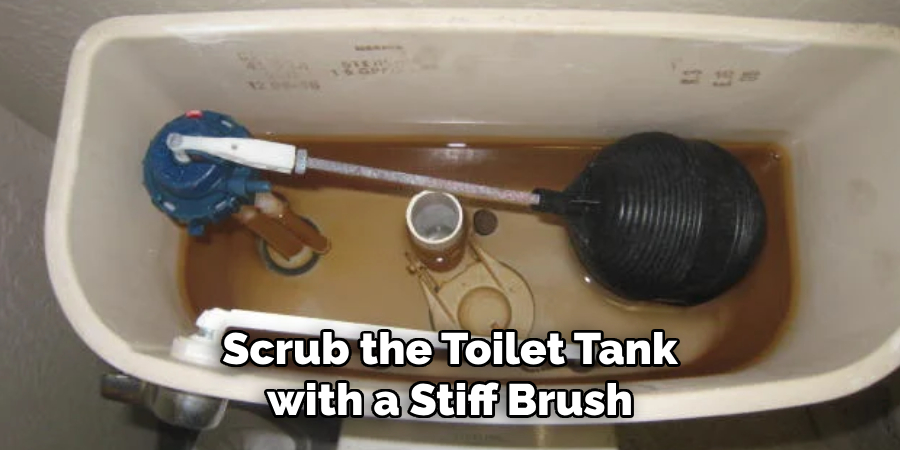
9. Flush the Toilet Regularly
Iron bacteria tend to thrive in stagnant water, so regularly flushing your toilet can help prevent their growth. If a toilet is not flushed frequently, especially in guest bathrooms or unused areas of the home, the water in the tank can become a breeding ground for iron bacteria. Regularly flushing the toilet ensures that fresh water circulates through the system, making it harder for bacteria to establish themselves. Additionally, periodic flushes can prevent the buildup of iron deposits that provide food for bacteria.
10. Address Plumbing Leaks or Stagnant Areas
Leaky pipes or sections of the plumbing system that hold stagnant water can contribute to the growth of iron bacteria. Inspect your home’s plumbing for any signs of leaks or areas where water may be sitting for extended periods. Fixing these issues will reduce the chances of iron bacteria growing in the system. Additionally, if you notice rust or other signs of corrosion in your plumbing, it may be worth replacing affected sections to prevent iron from entering your water supply.
Things to Consider When Managing Iron Bacteria in Your Toilet Tank
When dealing with iron bacteria in your toilet tank, there are several important factors to keep in mind to ensure effective treatment and prevention. First, consider the source of your water supply; if you rely on a well, regular testing for iron and bacteria levels is essential to understand the extent of the problem. Additionally, the frequency and severity of infestations may vary seasonally, so keeping a close watch on your toilet tank after heavy rains or changes in temperature can be beneficial.
Furthermore, it’s vital to understand the compatibility of cleaning methods with your plumbing. Some treatments, like bleach, can be corrosive to certain pipe materials, so it’s crucial to verify that the chosen solution is safe for your plumbing system. Consistent maintenance practices, such as regular cleaning and inspections, will prevent the recurrence of iron bacteria and prolong the lifespan of your fixtures. Lastly, if you encounter persistent issues despite following treatment guidelines, consulting a professional may provide you with tailored solutions suited to your specific situation.
Conclusion
Iron bacteria in a toilet tank may be a persistent issue, but with the right methods, you can eliminate them and prevent future infestations. From simple household solutions like bleach and vinegar to more long-term strategies such as water filtration systems, these ten methods will help keep your toilet tank clean and bacteria-free. Thanks for reading, and we hope this has given you some inspiration on how to get rid of iron bacteria in toilet tank!

